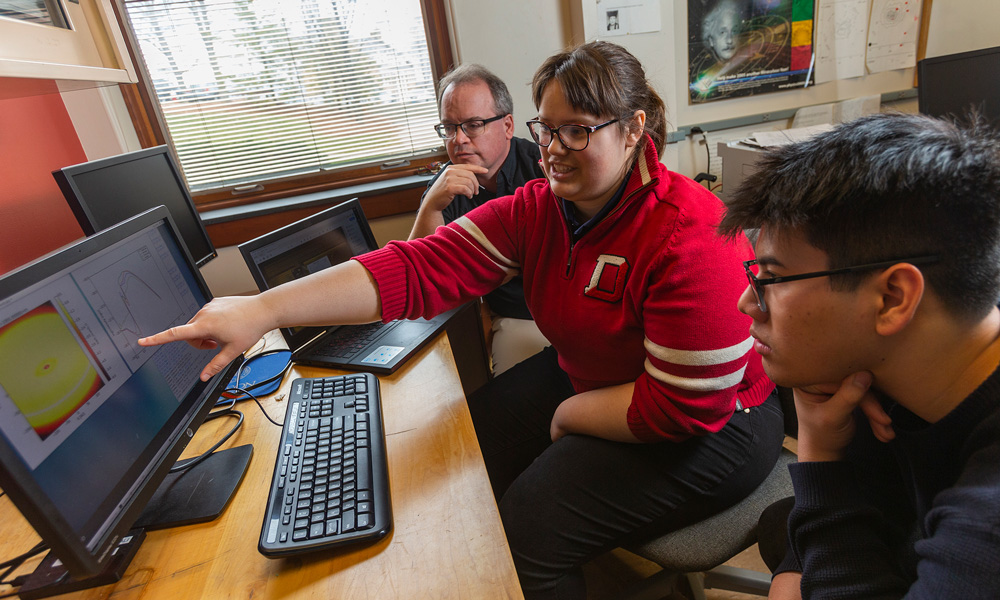Stars are forming out there in the universe, the closest ones still light years away.
Most places where stars are being formed are so far away that you can’t see them with the naked eye. And pointing a telescope at most of these places offers only minute pixels for observation.
So how do astronomers know how stars form and where they might be? And how do planets form in the debris surrounding young stars? That’s what Denison folks are trying to figure out.
Using a computational model, Steven Doty, professor of astronomy, physics, and computational science, along with Angela Sommerer ’20 and Tran Anh Nguyen ’20, simulated the process of star formation as part of the Summer Scholars Program.
Doty explains how they use the model. “We put in all those atoms, put them in a cloud that is starting to collapse. We let it start to warm up and let ultraviolet light hit it.”
At its simplest, star formation occurs when molecular clouds collapse and form stars. As the cloud collapses from the inside-out, a disk — a few times bigger than our solar system — forms in the middle. The center of the disk continues to collapse, forming a star. The star then “turns on” and blows away the disk and surrounding cloud, leaving the star and planets that formed in the disc.
But it’s a little more complicated than that.
“We don’t understand the exact processes that allow planets to form in the debris disks surrounding young stars, mainly because we don’t have much observational data from them,” says Sommerer. “Observers don’t know exactly what to look for in the night sky, what they should be on the lookout for. After all, space is big.”
That was the goal of Sommerer’s research, to identify what you would need to look for to find where planets are currently being made. Turns out, the key is the disk or rather, the part the disk is missing.
“Gaps are the indicators of planets in a disk,” Sommerer explains. “As a planet forms, it carves out the debris around it, leaving a gap in the disk.”
“Data has a way of totally changing what you think is going on.”
But even Doty, with his 20-plus years of research experience, didn’t see the results of this one coming. “I didn’t think we’d be able to see the gaps this easily,” he says. “It turns out, they should be relatively stinkin’ obvious. Data has a way of totally changing what you think is going on.”
He was also surprised by the results of Nguyen’s research, “We wanted to develop a computational model to test if our solar system began the way we think it did.”
Nguyen, too, modeled the collapse of an interstellar cloud to form a star, but he used that model to look at the chemistry of star formation. He compared the abundance of molecules they found in the model to the abundance of molecules from recent comet observations. And they matched.
Star-forming clouds begin with elements and simple molecules, the building blocks that eventually support life. Nguyen and Doty used the computational model to see if things like alcohols, acids and sugars, as well as lots of water could be created during star formation.
The answer? Yes.
Doty says. “Our models found that the building blocks of life may not require any ‘special magic’ to make them, but might just naturally be around as part of the evolution of star-forming clouds.”
Doty admits that he and Nguyen don’t have all the answers yet. They still don’t know if there are enough comets to seed the Earth with this stuff. But that’s the thing about research. There’s always the next question.
“Every day with my students, I get to see the world totally new again,” Doty says. “I see the universe differently because they see it differently. And because I’m interacting with them so closely, I take on some of that. I see it through their eyes.”
“There’s something new every day.”

